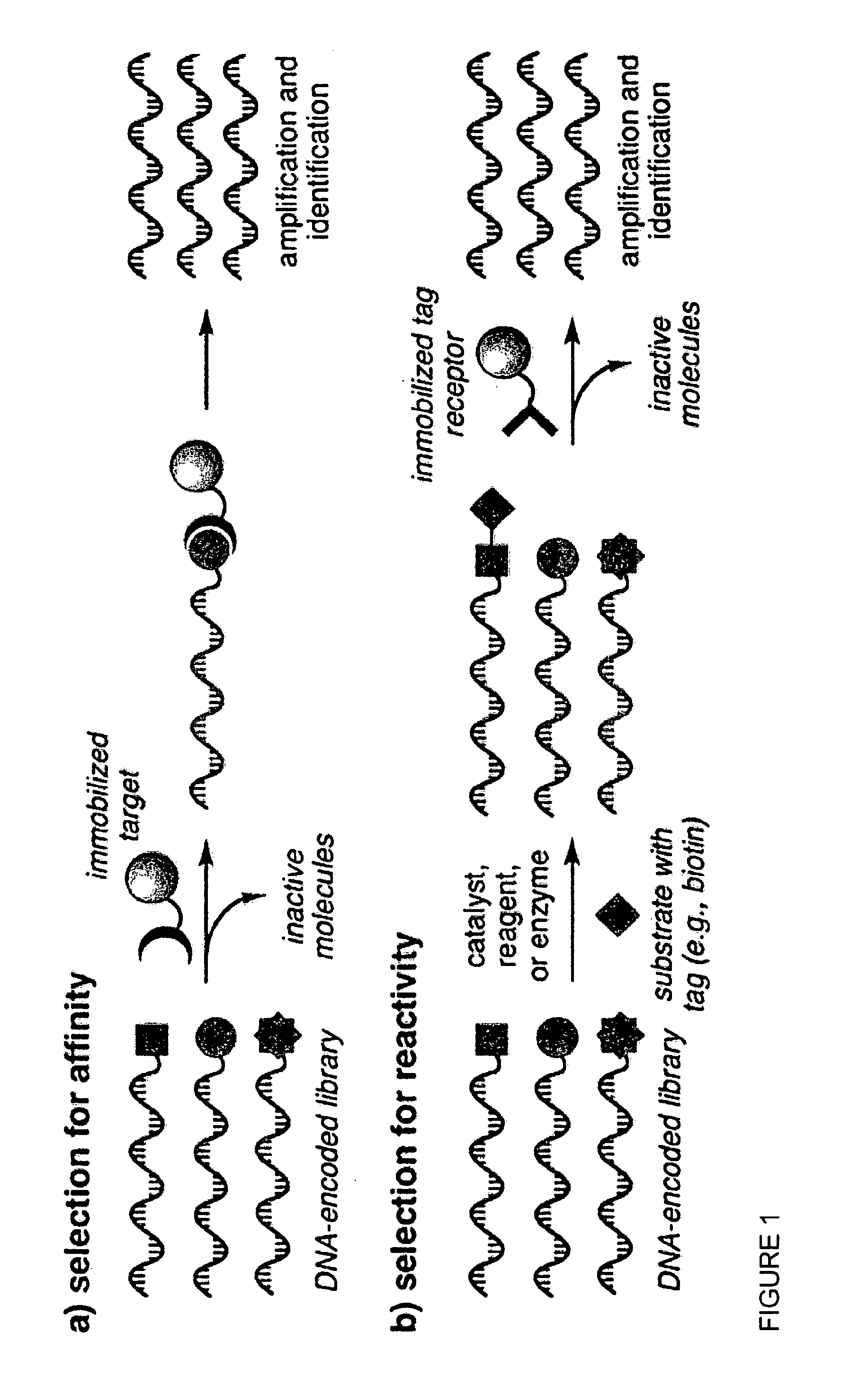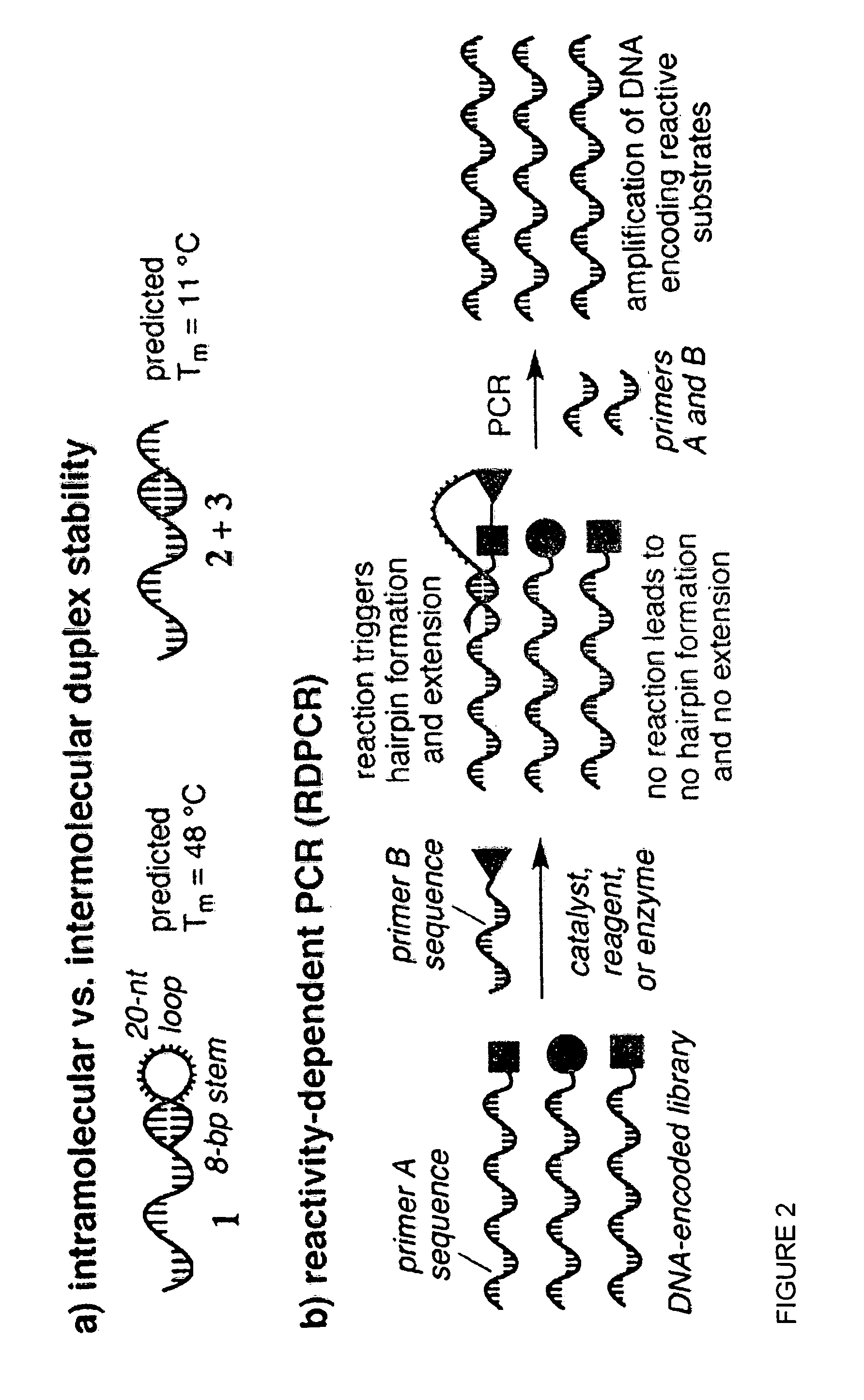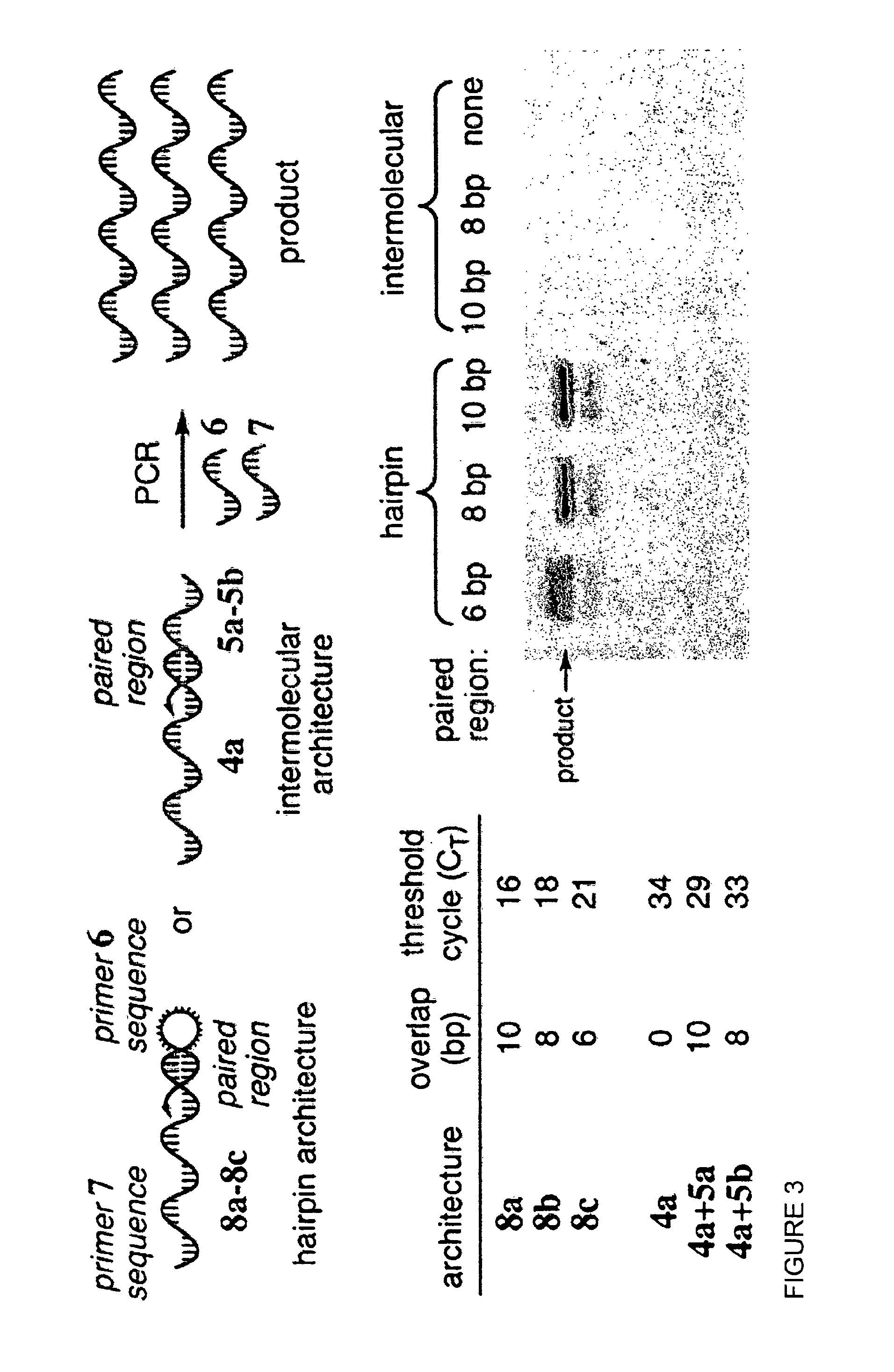Reactivity-dependent and interaction-dependent PCR
a reactivity-dependent and interaction-dependent technology, applied in the field of reactivity-dependent and interaction-dependent pcr, can solve the problems of significantly more complex selection of reactivity, much to be desired for efficient screening of libraries of rapidly increasing complexity, etc., and achieve the effect of high sensitivity of pcr
- Summary
- Abstract
- Description
- Claims
- Application Information
AI Technical Summary
Benefits of technology
Problems solved by technology
Method used
Image
Examples
example 1
Reactivity-Dependent PCR: Direct, Solution-Phase In Vitro Selection for Bond Formation
[0104]RD-PCR is based on the well-established observation that the melting temperatures (Tm) of double-stranded nucleic acids are substantially higher when hybridization occurs intramolecularly as opposed to intermolecularly. (10) For example, the DNA hairpin 1 with an 8 bp stem is predicted (11) to exhibit a Tm of 48° C., while the intermolecular hybridization of two DNA strands of the same sequence (2 and 3) is predicted to be far less favorable, with a Tm of only 11° C. (FIG. 2). The significant difference in intramolecular versus intermolecular duplex stability could enable a new type of in vitro selection, wherein bond formation or bond cleavage is transduced into the formation of a self-priming DNA hairpin. This hairpin enables the selective PCR amplification of those DNA sequences that encode the reactive species (FIG. 2b). (12)
[0105]The ability of intramolecular self-priming to result in pr...
example 2
Interaction-Dependent PCR: Direct, Solution-Phase In Vitro Selection for Non-Covalent Interaction
[0258]ID-PCR (FIG. 16) resembles RD-PCR except that non-covalent binding of one or two receptor-linked DNA strands (nucleic acid template and first primer, respectively) to an analyte, rather than the covalent bonding of the two strands, allows primer extension to generate a double-stranded PCR template. Because binding of one or both DNA strands to the analyte is required for intramolecular primer extension to generate a double-stranded PCR template, reactions in the absence of analyte do not result in significant template formation and therefore in minimal PCR amplification. In the presence of the analyte, however, binding of the analyte to the DNA-linked receptors brings the nucleic acid template and the first primer into proximity. As a result, their base pairing takes place, enabling primer extension to generate a double-stranded DNA template (FIG. 17).
[0259]At least two different a...
example 3
Interaction-Dependent PCR: Identification of Ligand-Target Pairs from Libraries of Ligands and Libraries of Targets in a Single-Solution-Phase Experiment
[0286]ID-PCR is based on the melting temperature (Tm) difference between duplex DNA formed intramolecularly versus duplex DNA formed intermolecularly. We hypothesized that binding of a target to its ligand would increase the effective molarity of single-stranded DNA (ssDNA) oligonucleotides linked to the target and ligand, promoting duplex formation between complementary regions on each strand that are otherwise too short to hybridize (FIG. 20a). The resulting hairpin could serve as starting point for primer extension. Only the newly extended hairpin contains in a single DNA strand two primer (or primer-binding) sequences that enable subsequent PCR amplification. ID-PCR therefore results in the selective amplification of those DNA sequences previously attached to, and therefore encoding, ligand-target pairs (FIG. 20a). In contrast t...
PUM
| Property | Measurement | Unit |
|---|---|---|
| mass | aaaaa | aaaaa |
| Tm | aaaaa | aaaaa |
| Tm | aaaaa | aaaaa |
Abstract
Description
Claims
Application Information
 Login to View More
Login to View More - R&D
- Intellectual Property
- Life Sciences
- Materials
- Tech Scout
- Unparalleled Data Quality
- Higher Quality Content
- 60% Fewer Hallucinations
Browse by: Latest US Patents, China's latest patents, Technical Efficacy Thesaurus, Application Domain, Technology Topic, Popular Technical Reports.
© 2025 PatSnap. All rights reserved.Legal|Privacy policy|Modern Slavery Act Transparency Statement|Sitemap|About US| Contact US: help@patsnap.com



